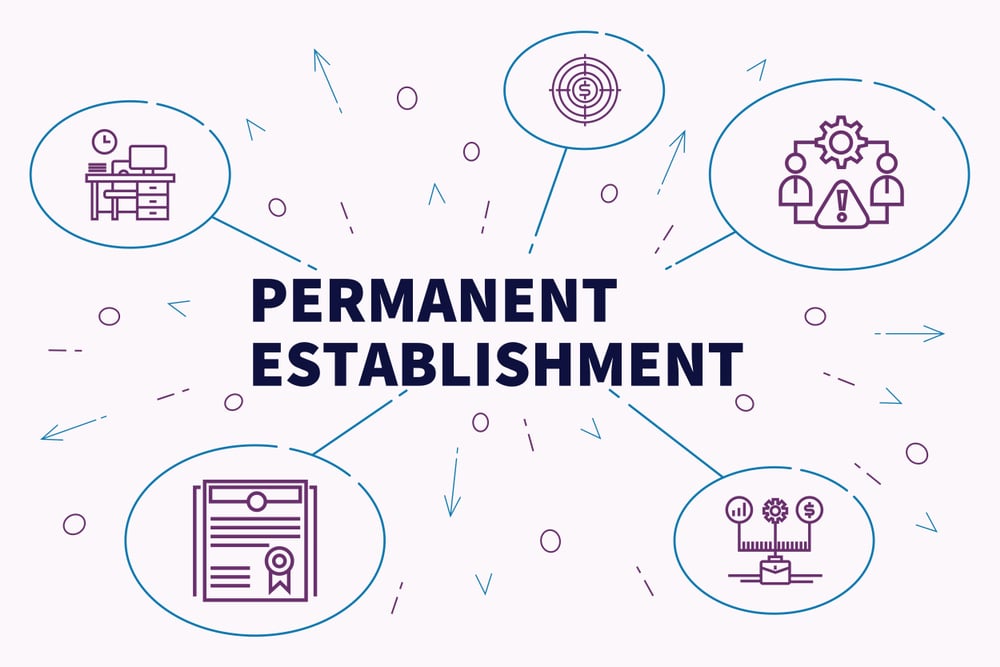This blog post outlines a comprehensive approach for C-level executives considering moving their manufacturing operations to Mexico. It covers evaluating the suitability of Mexico, selecting the mode of entry, assessing potential locations, estimating costs, visiting sites, and making an informed decision. This guide highlights strategic insights, practical steps, and various approaches to facilitate this process, including working with consultants or service providers like Tetakawi. Many of these steps can be done in any order, as companies often start at different points in the journey. This is a flexible reference to help you adapt these milestones to your company's unique culture.
1. Determine Whether Mexico Is Right for Your Company
The first step in this process is to evaluate whether Mexico aligns with your company's needs and goals. Generally, companies consider manufacturing in Mexico for one of four primary reasons. While there could be other factors, these are the most common:
- Customer Demand: This is often seen in the automotive industry, where an OEM or Tier 1 supplier might require their suppliers to be close to their Mexico operations.
- Cost Reduction Pressure: Companies seek to lower operational costs, including labor, utilities, and transportation.
- Market Access/Trade Barriers: To navigate trade barriers and access new markets efficiently.
- Labor Availability: Access to a skilled, young, cost-effective workforce.
Understanding these motivations is crucial as they directly influence the advantages and challenges of manufacturing in Mexico. Let's delve into the specific benefits and potential hurdles you might encounter when exploring the possibility of expanding into Mexico:
Advantages:
- Cost Savings: One of the primary reasons companies move their manufacturing operations to Mexico is the potential for significant cost savings. Labor costs are generally lower compared to the U.S. and other developed countries. Additionally, Mexico offers competitive utility costs and favorable exchange rates.
- Proximity to the U.S.: For companies in North America, Mexico's proximity allows for shorter supply chains, reduced shipping times, and lower transportation costs. The geographical closeness also facilitates easier coordination and management of operations.
- Trade Agreements: Mexico has numerous free trade agreements (FTAs) with over 50 countries, including the United States-Mexico-Canada Agreement (USMCA). These agreements can provide tariff reductions and other trade benefits, making it easier and cheaper to export goods.
- Skilled Workforce: Mexico boasts a growing pool of skilled labor, particularly in industries such as automotive, aerospace, electronics, and medical devices. The country has invested in education and training programs to enhance its workforce's capabilities.
- Established Manufacturing Hubs: Regions like the Border, Bajío, Northeastern Mexico, and Northwestern Mexico have established manufacturing hubs with developed infrastructure, supply chains, and support services.
Challenges:
- Regulatory Environment: Navigating Mexico's regulatory landscape can be challenging. Companies need to be aware of local labor laws, environmental regulations, and tax requirements. Engaging local legal expertise is crucial.
- Security Concerns: While many regions in Mexico are safe for business operations, some areas may have security issues. Conducting thorough research and risk assessments is essential to ensure the safety of your employees and assets.
- Cultural Differences: Understanding and adapting to the local business culture is vital for successful operations. Building strong relationships with local partners, suppliers, and employees can help mitigate cultural challenges.
- Logistics and Infrastructure: Although Mexico has made significant strides in improving its infrastructure, certain regions may still face logistical challenges. Assessing the availability and reliability of transportation networks, ports, and communication systems is crucial.
2. Decide On The Mode Of Entry For Manufacturing In Mexico

Once you've determined that Mexico is a viable option for your manufacturing operations, the next step is to decide on the mode of entry. Companies can explore multiple options in parallel to identify the best fit. Here are the main modes of entry:
Direct Investment:
-
Incorporation: Establishing a wholly-owned subsidiary or building a new facility from scratch. This option provides complete control over operations but requires significant capital investment and time.
-
Acquisition: Acquiring an existing company or facility. This approach offers quicker entry and access to established operations but may involve integration challenges.
Joint Ventures and Partnerships:
- Forming a joint venture with a local company can provide access to local knowledge, networks, and resources while sharing risks and rewards.
Contract Manufacturing:
- Partnering with a contract manufacturer allows companies to outsource production to a local firm. This option reduces capital investment and provides flexibility but may involve less control over production processes.
Shelter Services:
- Utilizing a shelter service provider like Tetakawi is a mode of entry unique to Mexico and is typically the quickest, most cost-effective, and least risky way to establish a facility. This approach enables companies to operate under the provider's legal entity while maintaining 100% control over production-related activities. Shelter services offer a streamlined entry with reduced administrative burden and regulatory compliance.
3. Evaluate Potential Manufacturing Locations In Mexico
After selecting the mode of entry, it's time to evaluate specific locations within Mexico. This involves assessing various factors to determine the best fit for your operations:
Industrial Clusters:
- Identify regions with established industrial clusters related to your industry. These clusters offer access to suppliers, skilled labor, and infrastructure tailored to your needs.
Infrastructure:
- Assess the availability and quality of infrastructure, including transportation networks (roads, railways, ports, and airports), utilities (electricity, water, gas), and communication systems.
Labor Market:
- Evaluate the availability, skill level, and cost of the local workforce. Consider proximity to educational institutions and training centers that can support your talent needs.
Incentives and Support:
- Research government incentives, tax benefits, and support programs available for foreign investors in different regions. Local authorities often provide incentives to attract manufacturing operations.
Quality of Life:
- Consider the quality of life in potential locations, including factors such as housing, healthcare, education, and recreational facilities. A high quality of life can help attract and retain talent.
For more insights on selecting optimal locations amid Mexico's manufacturing boom, tune into this podcast:
4. Estimate What It Would Cost To Expand Into Mexico
Accurately estimating the costs involved in setting up and operating in Mexico is crucial for building a robust business case. Here are some cost factors to consider:
Capital Expenditure:
- Costs associated with land acquisition, construction or renovation of facilities, and purchasing equipment and machinery.
Operating Costs:
- Labor costs, utilities, raw materials, transportation, and maintenance expenses. Compare these costs to your current operations to determine potential savings.
Regulatory and Compliance Costs:
- Expenses related to meeting local regulatory requirements, including permits, licenses, environmental compliance, and legal fees.
Taxes and Duties:
- Understand the tax implications, including corporate taxes, import/export duties, and any applicable incentives or exemptions.
Supply Chain Costs:
- Evaluate the costs of sourcing materials and components locally versus importing them. Consider the impact of tariffs, transportation costs, and lead times.
5. Visit Locations And Meet Potential Service Providers
Once you have shortlisted potential locations, it is essential to conduct site visits and meet with potential service providers. This step allows you to gather firsthand information and build relationships with local partners.
Site Visits:
- Schedule visits to potential locations to assess infrastructure, facilities, and the local environment. Meet with local authorities, industry associations, and business leaders to gain insights into the region's business climate.
Service Providers:
- Meet with potential service providers, including shelter service providers, contract manufacturers, logistics companies, and key suppliers. Evaluate their capabilities, track record, and alignment with your business needs.
6. Make a Go or No-Go Decision
After gathering all necessary information and conducting thorough evaluations, it's time to make a go or no-go decision. This involves weighing the benefits and risks, considering the financial implications, and aligning the decision with your overall business strategy.
Financial Analysis:
- Conduct a detailed financial analysis, including cost-benefit analysis, return on investment (ROI), and payback period calculations. Compare the potential savings and benefits to the initial and ongoing costs.
Risk Assessment:
- Identify and assess potential risks, including regulatory, operational, and market risks. Develop mitigation strategies to address these risks.
Strategic Alignment:
- Ensure that the decision aligns with your company's long-term strategic goals and objectives. Consider the potential impact on your brand, customer relationships, and market position.
Decision-Making Process:
- Involve key stakeholders in the decision-making process, including senior management, finance, operations, and legal teams. Seek input and consensus to ensure a well-rounded decision.
7. Different Approaches to the Process
There are multiple ways to approach the process of building a business case for manufacturing in Mexico. Companies can choose to work in isolation, hire a consultant, or work with a service provider like Tetakawi.
Working in Isolation:
- Companies can conduct their own research, evaluations, and negotiations. This approach provides complete control but requires significant internal resources and expertise.
Hiring a Consultant:
- Engaging a consultant with experience in the Mexican manufacturing sector can provide valuable insights, market knowledge, and project management support. Consultants can help navigate regulatory requirements, identify potential locations, and negotiate with service providers.
Working with a Service Provider:
- Partnering with a service provider like Tetakawi offers a comprehensive solution, combining local expertise, established networks, and streamlined processes. Service providers can handle administrative and regulatory tasks, allowing companies to focus on their core operations.
Conclusion
Building a business case for manufacturing in Mexico involves a systematic approach to evaluate suitability, select the mode of entry, assess locations, estimate costs, and make an informed decision. Many of these steps can be done in any order, as companies often start at different points in the journey. This is a flexible reference to help you adapt these big steps to your company's unique culture. Whether working in isolation, hiring a consultant, or partnering with a service provider like Tetakawi, there are multiple pathways to success in this dynamic and opportunity-rich market.
If you have further questions or need personalized assistance, feel free to reach out to us at Tetakawi. Since 1986, we have helped thousands of companies explore the possibility of manufacturing in Mexico.
Subscribe
Sign up and stay informed with tips, updates, and best practices for manufacturing in Mexico.
Table of Contents:
- Determine Whether Mexico Is Right for Your Company
- Decide On The Mode Of Entry For Manufacturing In Mexico
- Evaluate Potential Manufacturing Locations In Mexico
- Estimate What It Would Cost To Expand Into Mexico
- Visit Locations And Meet Potential Service Providers
- Make a Go or No-Go Decision
- Different Approaches to the Process
- Conclusion






